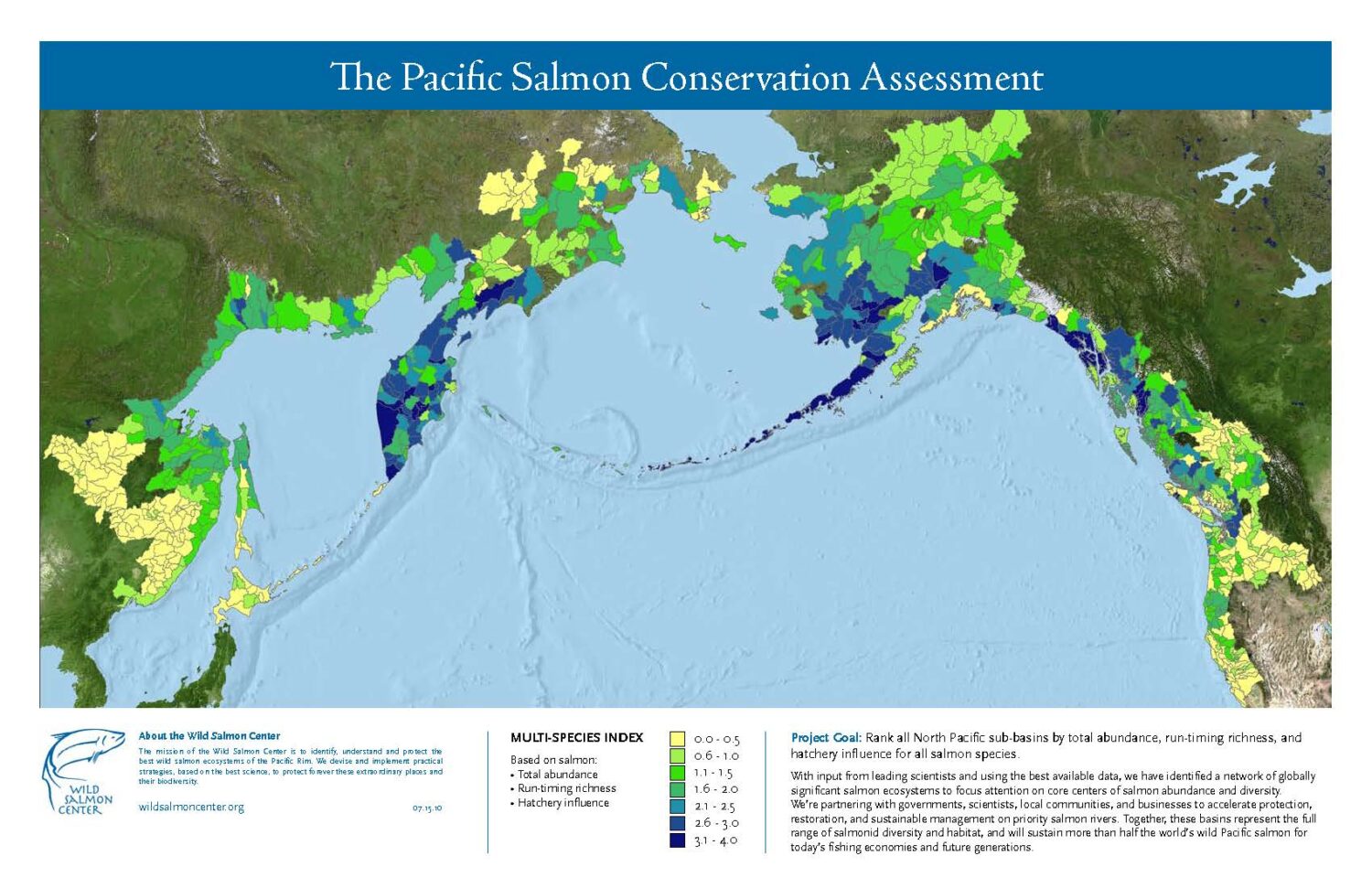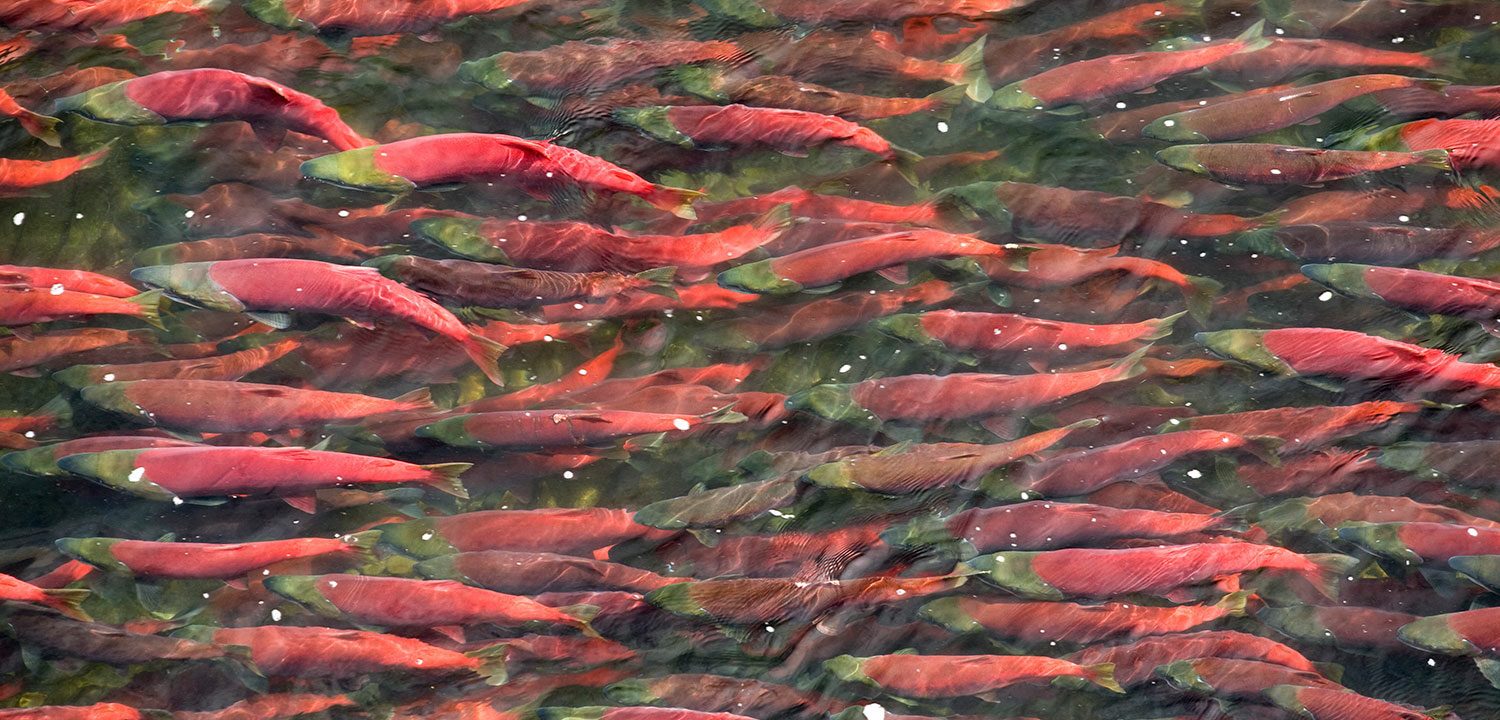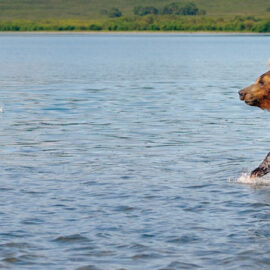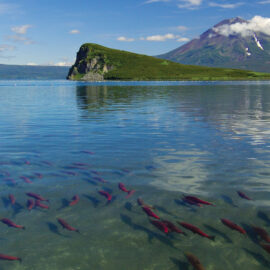Protecting the best: Proactive conservation
Billions of taxpayer dollars have been spent on salmon restoration efforts in the United States and Canada but few success stories have emerged. Some may yet succeed; it is still too early – only a few salmon generations’ worth of time – to discount them. But most salmon restoration
efforts have failed so far because they were implemented only after salmon stocks reached low levels of abundance. In 45 years, no salmon or steelhead species has been taken off the Endangered Species list.
We now know that it is easier and cheaper to conserve a salmon river while it’s still healthy, than to fix that river once it’s broken. So Wild Salmon Center employs a proactive and preemptive approach throughout the North Pacific, working to protect salmon “strongholds” before they slide into decline.
What is a Salmon Stronghold?
The term “stronghold” refers to a watershed, multiple watersheds, or other defined area where wild salmon populations are strong and diverse, and habitats are highly functioning and intact (free of hydroelectric dams, hard-rock mines, and other damaging development). Salmon strongholds represent watersheds that have high salmon and steelhead productivity, and genetic diversity, as well as outstanding habitat important to sustaining these wild Pacific salmon species.
Across the range of Pacific salmon, strongholds have different qualities. Because of regional differences in salmon health, Wild Salmon Center and partners employ different approaches to defining and protecting strongholds, depending on location.

Northern regions
In the northernmost section of the Pacific, British Columbia, Alaska, and the Russian Far East host a wealth of healthy salmon rivers. On these rivers, excellent habitat support healthy fisheries and strong salmon-dependent communities. We work across these regions to protect salmon abundance, by stopping development from eroding healthy habitat along rivers, fighting illegal and legal overharvesting of salmon, and supporting sustainable fishing livelihoods. On especially important river systems, such as those in Bristol Bay, Alaska or the Kol River in Kamchatka, Russia, we have focused our energies on preemptive protection from damaging development and landscape-level changes that would affect the state of salmon across the entire North Pacific.
Lower regions
In Washington, Oregon, California and Japan, we invest our energy in individual stronghold rivers, as anchors to recover diminished salmon runs throughout the lower Pacific salmon regions. Without protecting these centers of wild salmon abundance and diversity, endangered populations may not have a chance to bounce back.
In 2009, a core group of U.S. federal and state agencies and organizations, including Wild Salmon Center, called for the creation of a network of stronghold rivers.
To map strongholds in the Pacific Northwest, stronghold partners organized by state and scored populations based on the number of wild spawning fish, the diversity of life histories (those unique salmon development and migration patterns that vary across populations and places), and the influence of hatchery reared-fish on their wild counterparts. After using these criteria to determine “strong populations,” the partners then assessed overall watershed health to generate a final map. Each state then submitted its map to the partnership board for review and approval.
These maps, finished in 2010, represent version 1.0 for lower North America. They will be updated to consider climate change and population resilience, and continue to serve as guideposts for Wild Salmon Center and other organizations and agencies working to protect and recover wild salmon.



